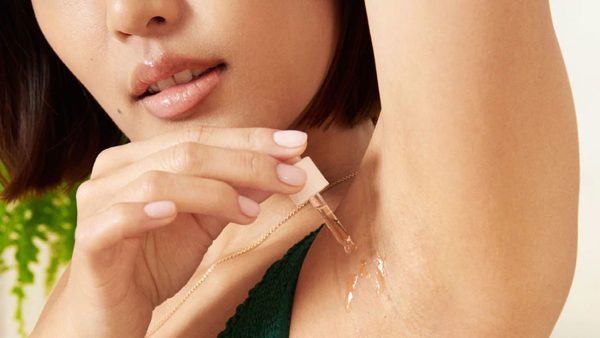
Best Treatments For Ingrown Hairs
Ingrown hairs can be quite bothersome and sometimes even painful, resulting in irritation, redness, and unattractive bumps on the skin. Whether they come from shaving, waxing, or natural hair growth, finding the right treatment can make a significant difference in getting rid of ingrown hair problems and achieving smooth, clear skin. In this article, we will look into the best treatments for ingrown hairs, its causes and origin, and provide tips for preventing future occurrences.
What Causes Ingrown Hairs?
When hair follicles become lodged under the skin’s surface and twist inward rather than outward, ingrown hairs result. Many times, this causes redness, inflammation, and the development of sore bumps or lesions. Ingrown hairs can result from a number of things, including:
Hair Removal Techniques: Ingrown hairs are more common when hair is shaved, waxed, or plucked back at an angle. An other factor that might lead to ingrown hair development is utilizing dull razors or improper technique.
Curly or Coarse Hair: Because their hair tends to coil back into the skin rather than growing straight out of the follicle, those with curly or coarse hair are more susceptible to ingrown hairs.
Tight Clothing: Wearing tight clothing, especially immediately after hair removal, can increase friction and pressure on the skin, leading to ingrown hairs.
Overabundance of Dead Skin Cells: Ingrown hairs can arise from the obstruction of hair follicles and improper growth of hair out of the skin’s surface by dead skin cells.
Effective Ingrown Hair Treatments
Exfoliation: By helping to eliminate dead skin cells and other debris from the skin’s surface, regular exfoliation keeps hair follicles from getting blocked. Select mild scrubs or chemical exfoliants that include glycolic or salicylic acid.
Topical Therapies: To lower inflammation and stop infection, apply topical therapies including antibacterial and anti-inflammatory components. Soothing and therapeutic ingredients include hydrocortisone, witch hazel, and tea tree oil.
Warm Compresses: The afflicted region can be softened, pores opened, and hair encouraged to break through the surface by applying warm compresses. This can help to ease the agony and pain brought on by ingrown hairs.
Retinoids: Ingrown hair production can be avoided and cell turnover promoted by topical retinoid creams or serums containing retinol or tretinoin. For those who get ingrown hairs frequently, these products work very well.
Professional Treatments: Think about getting laser hair removal or electrolysis if the ingrown hairs are really bad or if they keep happening. Targeting the hair follicles, these therapies can stop ingrown hairs from coming back.
Tips for Preventing Ingrown Hairs and Achieving Smooth Skin
Avoiding the discomfort and frustration of ingrown hairs is crucial. Here are a few pointers to help you keep your skin smooth and free from ingrown hairs:
Effective Hair Removal Techniques: Employing correct shaving or waxing methods can help reduce the likelihood of ingrown hairs. It’s important to remember to shave in the direction of hair growth, use sharp razors, and avoid pulling the skin taut. This will help prevent hairs from growing back into the skin and ensure a smoother shave.
Regular Exfoliation: Incorporate regular exfoliation into your skincare routine to prevent the buildup of dead skin cells and debris that can clog hair follicles, just like any other person would do. It is recommended to incorporate a gentle exfoliating scrub or chemical exfoliant into your skincare routine 2-3 times per week.
Moisturize Daily: It’s important to keep your skin well-hydrated and moisturized to ensure its overall health and elasticity. Make sure to use a lightweight, non-comedogenic moisturizer every day to avoid dryness and irritation, which can cause ingrown hairs.
Wear Loose Clothing: Choose loose-fitting clothing to minimize friction and pressure on the skin, particularly after hair removal. This can be helpful in preventing the formation of ingrown hairs in areas that are more prone to friction, such as the bikini line or underarms.
Don’t Over Exfoliate: Exfoliating is important for preventing ingrown hairs, but it’s important not to overdo it. Over-exfoliating can remove the skin’s natural oils and cause irritation. Stick to gentle exfoliation methods and pay attention to what your skin requires.
Frequently Asked Questions About Best Treatments For Ingrown Hairs
1. What are ingrown hairs, and how do they form?
Ingrown hairs occur when a hair curls back or grows sideways into the skin instead of upward and outward. This often leads to inflammation, redness, and the formation of painful bumps or lesions. Ingrown hairs typically result from improper hair removal techniques, such as shaving or waxing, as well as factors like curly hair texture or tight clothing.
2. What are the best treatments for ingrown hairs?
Effective treatments for ingrown hairs include exfoliation to remove dead skin cells, topical treatments to reduce inflammation and infection, warm compresses to soothe the skin and encourage hair growth, retinoids to promote cell turnover, and professional treatments such as laser hair removal or electrolysis for persistent cases.
3. How can I prevent ingrown hairs from forming?
To prevent ingrown hairs, practice proper hair removal techniques such as shaving in the direction of hair growth, using sharp razors, and avoiding pulling the skin taut. Additionally, exfoliate regularly to remove dead skin cells, moisturize to keep the skin hydrated, and wear loose-fitting clothing to reduce friction and pressure on the skin.
4. Are there any home remedies for treating ingrown hairs?
Yes, several home remedies can help treat ingrown hairs, including applying warm compresses to the affected area, using tea tree oil or witch hazel as a natural antiseptic, and gently exfoliating with a sugar or salt scrub. These remedies can help reduce inflammation and promote healing.
5. How long does it take for ingrown hairs to heal?
The healing time for ingrown hairs varies depending on the severity of the condition and the effectiveness of the treatment. In most cases, ingrown hairs will resolve on their own within a few days to a week with proper care and treatment.
6. Can I pop or pick at ingrown hairs?
It’s best to avoid picking or popping ingrown hairs, as this can lead to further irritation, infection, and scarring. Instead, focus on gentle exfoliation and applying topical treatments to help the hair break through the skin’s surface naturally.
7. Are there any side effects or precautions I should be aware of when using treatments for ingrown hairs?
While treatments for ingrown hairs are generally safe to use, some individuals may experience sensitivity or allergic reactions to certain ingredients. It’s essential to patch test new products and discontinue use if any adverse reactions occur. Additionally, avoid over-exfoliating or using harsh products that can further irritate the skin.
8. When should I see a dermatologist for ingrown hairs?
If you have persistent or severe ingrown hairs that do not respond to home remedies or over-the-counter treatments, or if you experience signs of infection such as pus, swelling, or fever, it’s important to see a dermatologist for evaluation and treatment. A dermatologist can provide personalized care and recommend appropriate treatments for your specific condition.
Wrap Up
Dealing with ingrown hairs can be quite frustrating, but fear not! By implementing the right treatment and prevention strategies, you can achieve smooth, clear skin and say goodbye to those pesky ingrown hairs once and for all. By gaining knowledge about the causes of ingrown hairs, selecting effective treatment options, and implementing preventive measures, you can achieve smooth, bump-free skin and enhance your self-assurance in a short period.

Leave a Reply